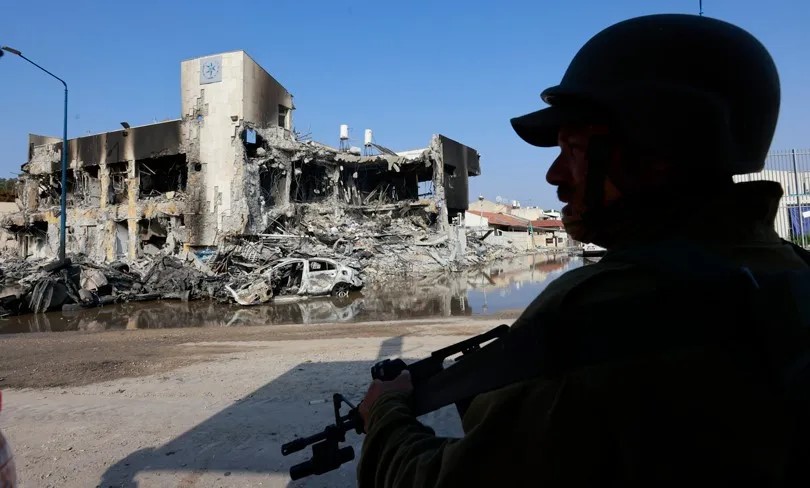
Photo Credit: Yossi Zamir, Shatil Stock
Rachel Edry is a name that has become synonymous with resilience. Rachel and her husband David were taken hostage by Hamas terrorists in their home in Ofakim on October 7th. Remarkably, they were rescued by Israeli security forces—largely due to Rachel’s calm and creativity—and her story of survival is just one of many from that day.
Rachel Edry is from Ofakim, a development town just 16 miles from the Gaza border. Development towns were created in the 1950s to help house the massive influx of Jewish refugees and immigrants who arrived primarily from Arab countries. On October 7th, Ofakim was overrun by Hamas gunmen, yet neither it nor other communities like Netivot and Ashkelon were included in the government-sponsored “Tkuma”—or “rehabilitation”—plan for rebuilding and recovery. The government excluded Ofakim when it defined the “rehabilitation zone” as any community within four miles of the Gaza border as qualifying for assistance. The reason stems from an outdated bureaucratic protocol: four miles was the range of Qassam rockets fired from Gaza in the early 2000s.
Shatil policy consultant Shmulik David has worked tirelessly to ensure that towns like Ofakim be included in any rebuilding and compensation plan. And recently, his advocacy and the advocacy of other NIFC project partners like Bimkom: Planners for Planning Rights, and NIF grantees like the Adva Center and the Mizrahi Collective—paid off. Last month, the Israeli government passed a budget that included one billion shekels to these towns. The organizations listed above, alongside Shatil, worked closely with municipalities and submitted a position paper calling for a more balanced, comprehensive approach to rehabilitation of the Western Negev. A conference was also held in Netivot for local leaders to address and discuss local rehabilitation. As Shmulik recalls, the conference was small but highly impactful; it offered a space for collaboration and solidarity. These actions largely succeeded in bringing the issue into the Israeli public discourse.
Shatil has also insisted that the Bedouin city of Rahat be included in the government’s Western Negev rehabilitation plan. Although it is situated in the Central Negev, near Be’er Sheva, and is not directly adjacent to Gaza, it was affected on October 7th. In addition to rocket fire that hit the town, several Rahat residents were killed or kidnapped by Hamas into Gaza. And countless residents lost their livelihoods, as many were employed in the kibbutzim surrounding the Gaza Strip. Rahat’s inclusion in this plan would ensure that the city and its residents receive much-needed investment in its economy and infrastructure.
Finally, Shatil has been advocating for emotional and mental rehabilitation of the residents of the Western Negev. Since the outset of the war, Shatil staff recognized the need for mental support and services for those who had gone through the trauma of October 7th, and secured government subsidies to fund psychological services for the residents of Ofakim.
Shatil will continue to support residents like Rachel Edry as they continue rebuilding their lives.
